Explore the differences between solar and wind energy: a comparison of efficiency, cost, development potential in Vietnam, and real-world applications.
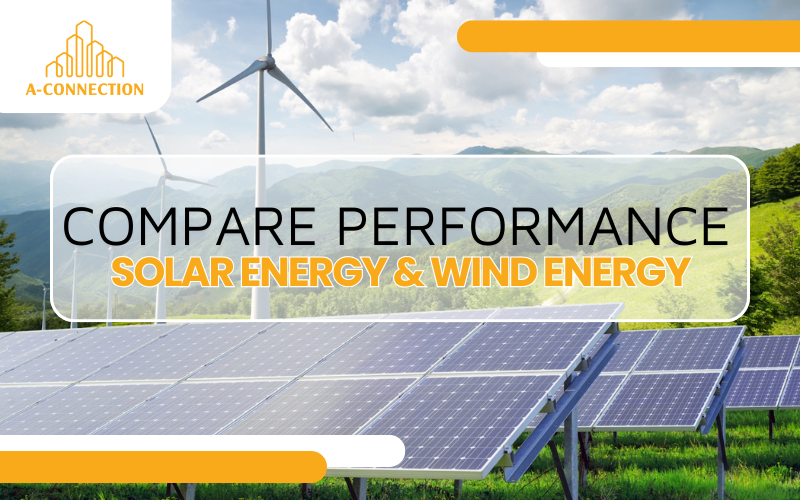
1. Introduction to Renewable Energy
Amidst the global climate crisis, the depletion of fossil fuels, and the growing need for sustainable development, renewable energy has emerged as a top priority. Among the various forms of clean energy, solar and wind power are the most popular and widely invested sources worldwide.
Advanced countries such as Germany, China, the United States, and Denmark are leading the way in utilizing clean energy to reduce dependence on fossil fuels and minimize CO₂ emissions. In Vietnam, this trend is also gaining momentum with a series of government incentives and investment promotion policies.
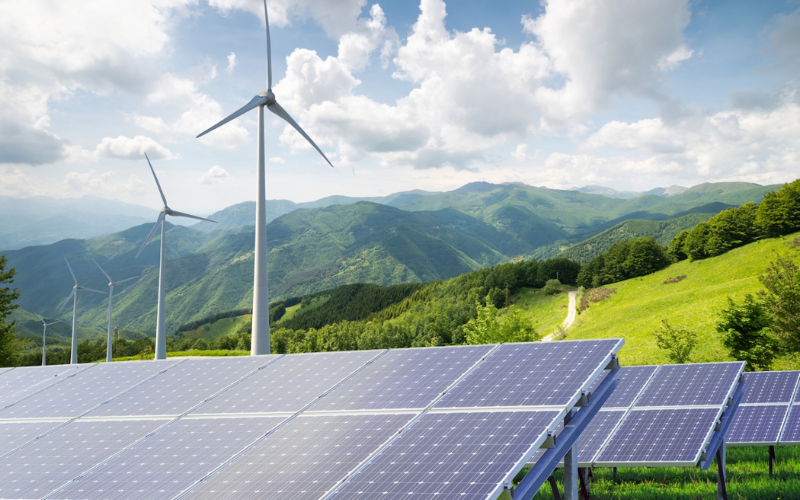
What is renewable energy?
So, between solar and wind energy, which is more efficient in terms of performance, investment cost, reliability, and development potential? This article will provide a comprehensive and in-depth comparison of these two clean energy sources.
2. What is Solar Energy?
Solar energy is generated by converting sunlight into electricity using photovoltaic panels (solar panels). This technology is commonly used in residential, commercial, and industrial applications.
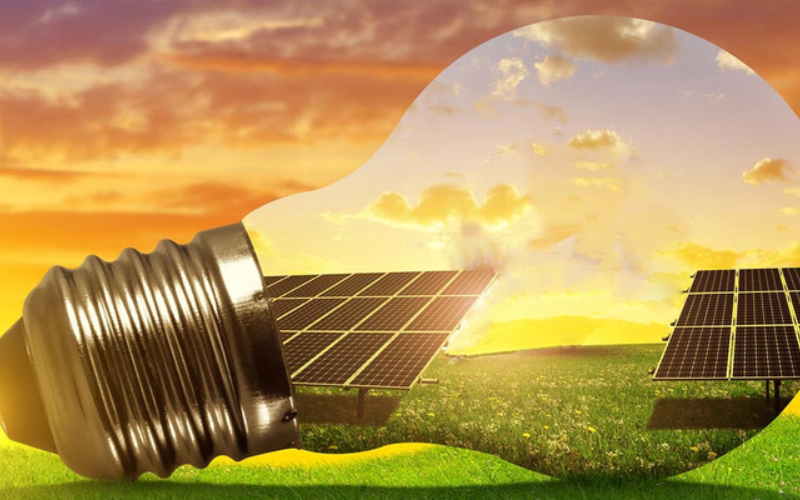
What is solar energy?
Advantages
-
- Abundant and free energy source: Sunlight is available almost everywhere, especially in tropical countries like Vietnam.
- Flexible deployment: Solar panels can be installed on rooftops, high-rise buildings, factories, or large-scale solar farms in deserts or vacant land.
- Low operating costs: Once installed, solar panels operate with minimal maintenance.
- Environmentally friendly: No greenhouse gas emissions or pollution to air or water during operation.
- Abundant and free energy source: Sunlight is available almost everywhere, especially in tropical countries like Vietnam.
Disadvantages
-
- Weather and sunlight dependency: No power generation at night and reduced efficiency during cloudy or rainy days.
- Requires large space for high capacity: Large-scale systems need significant land area.
- High upfront investment costs: Especially for storage systems (batteries) to provide electricity when there is no sunlight.
- Weather and sunlight dependency: No power generation at night and reduced efficiency during cloudy or rainy days.
3. What is Wind Energy?
Wind energy is generated by converting the kinetic energy of wind into electricity using wind turbines. It is a rapidly growing renewable energy source, especially in coastal and highland areas.
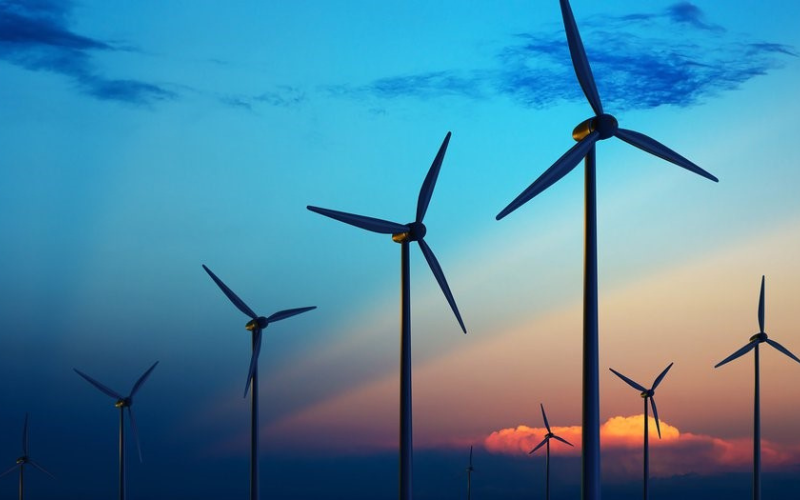
What is wind energy?
Advantages
-
- Clean and inexhaustible source: Wind is a natural force that will never run out.
- High efficiency in windy areas: Wind power can achieve higher efficiency than solar in coastal or highland regions.
- Capable of producing large-scale electricity: Offshore wind farms can serve thousands of households or entire industrial zones.
- Clean and inexhaustible source: Wind is a natural force that will never run out.
Disadvantages
-
- High capital costs: Wind turbines require advanced technical infrastructure, especially offshore installations.
- Terrain requirements: Not suitable for areas with low wind speeds or dense urban development.
- Environmental impact: Wind turbines can generate noise and affect surrounding ecosystems if not well planned.
- High capital costs: Wind turbines require advanced technical infrastructure, especially offshore installations.
4. Comparison of Efficiency Between Solar and Wind Energy
| Criteria | Solar Energy | Wind Energy |
| Conversion efficiency | 15% – 22% (modern solar panels) | 35% – 45% (modern wind turbines) |
| Supply stability | Weather and sunlight dependent | Dependent on wind speed and consistency |
| Initial investment cost | Medium to high | Higher than solar |
| Maintenance cost | Very low | Medium to high |
| Payback period | 5 – 10 years | 6 – 12 years |
| Suitable terrain | Anywhere with sufficient sunlight | Windy regions: coastal areas, highlands |
-
- In terms of efficiency, wind power stands out with higher conversion rates, but it requires favorable natural conditions.
- Solar power is more accessible for individuals and households due to its lower cost and flexible installation.
- Environmentally, both outperform fossil fuels, though solar has fewer operational impacts.
- In terms of efficiency, wind power stands out with higher conversion rates, but it requires favorable natural conditions.
5. Real-World Applications and Development Potential in Vietnam
Vietnam is one of Southeast Asia’s leading countries in renewable energy potential thanks to its favorable geographical location:
Solar Energy in Vietnam
-
- Central, Central Highlands, and Southern regions receive 2,000 – 2,500 sunlight hours/year.
- Numerous successful rooftop solar projects in residential areas, factories, industrial zones, and agricultural farms.
- Government policies allow selling surplus electricity back to the national grid.
- Central, Central Highlands, and Southern regions receive 2,000 – 2,500 sunlight hours/year.
Wind Energy in Vietnam
-
- With over 3,200 km of coastline, provinces like Binh Thuan, Ninh Thuan, and Soc Trang have ideal wind speeds.
- Dozens of onshore and offshore wind projects are being implemented with a total capacity of thousands of MW.
- In Power Development Plan VIII, wind power is positioned as a cornerstone of the national energy strategy.
- With over 3,200 km of coastline, provinces like Binh Thuan, Ninh Thuan, and Soc Trang have ideal wind speeds.
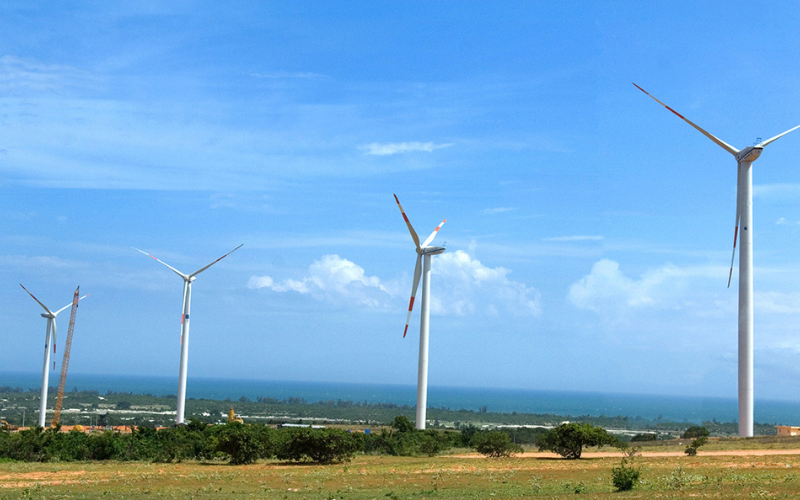
Vietnam wind energy project
Development Opportunities
-
- Combining renewable sources with energy storage technologies (like lithium-ion batteries or pumped hydro) ensures stable 24/7 electricity supply.
- Tech and manufacturing companies can reduce electricity costs and enhance their green brand reputation.
- Households benefit from lower electricity bills and reduced reliance on traditional power sources.
- Combining renewable sources with energy storage technologies (like lithium-ion batteries or pumped hydro) ensures stable 24/7 electricity supply.
There is no one-size-fits-all answer when choosing between solar and wind energy. Each has its own strengths and limitations, depending on geographic location, investment budget, and usage goals.
The optimal path forward in a national energy strategy is to harmoniously combine solar and wind power, alongside investment in storage technologies and smart grid systems. When renewable sources are integrated smoothly, we not only solve the energy challenge but also protect the environment and promote sustainable development.
A greener planet starts with clean energy.
Let’s invest in and use renewable energy to protect the environment and build a sustainable future!




